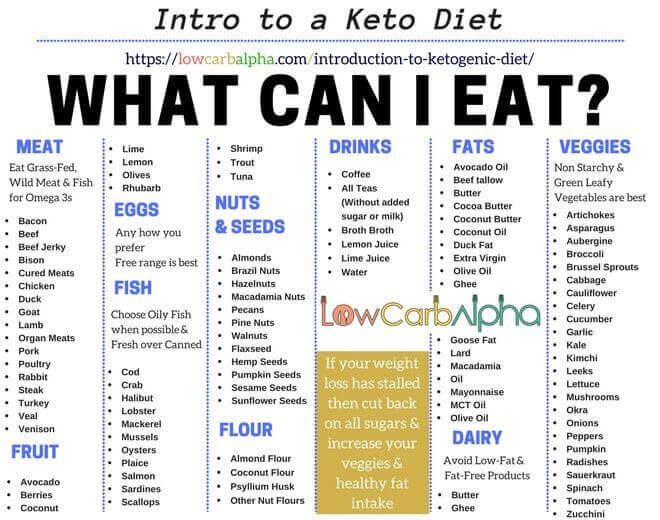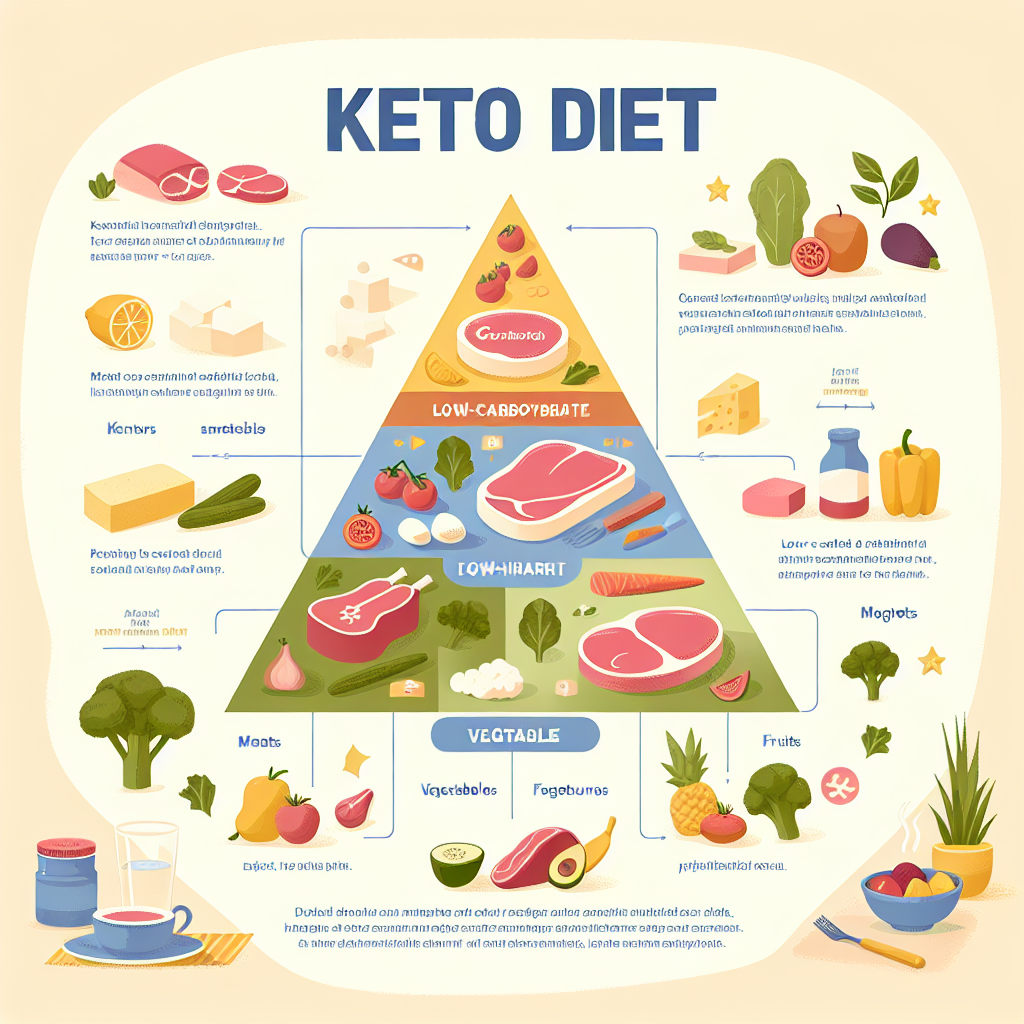Uncover the secrets of the keto diet in an easy-to-understand guide. Say goodbye to confusion and hello to results!
Table of Contents
Introduction to the Keto Diet
Hello there, young readers! Today, we’re going to talk about something called the keto diet in really simple words so you can easily understand it. Have you heard about a keto diet before? It’s a special way of eating that we’re going to explore together!
What is a Keto Diet?
So, a keto diet is like a special plan for what to have for meals. It’s all about eating foods that are high in fat, moderate in protein, and very low in carbs. This way of eating helps our bodies use fat for energy instead of carbs. Cool, right?
How Does the Keto Diet Work?
Have you ever wondered how the keto diet actually helps our bodies? Let’s dive into the science of it in a way that’s easy to understand, like how our bodies can use different things for energy, like sugar and fat.
Using Fat for Energy
Normally, our bodies use sugar from the food we eat as fuel. But when we switch to a keto diet, we eat fewer carbs, which are turned into sugar, and more fats. This change tricks our bodies into a state called ketosis. In ketosis, our bodies start using fat for energy instead of sugar. So, by eating lots of fats and very few carbs, we make our bodies burn fat for fuel. Pretty cool, right?
What to Eat on a Keto Diet
When you’re following a keto diet, it’s important to know what kinds of foods you can eat to help your body use fat for energy. Here are some yummy keto-friendly foods that you can enjoy:

Image courtesy of via Google Images
Yummy Keto Foods
On a keto diet, you can have foods like cheese, eggs, and certain veggies. These foods are low in carbs and high in fats, which can help your body stay in ketosis, a state where it burns fat for fuel.
What About Snacks?
For snacks on a keto diet, you can choose options like nuts, seeds, and avocado slices. These snacks are high in healthy fats and low in carbs, making them perfect for keeping you full and satisfied between meals.
Remember, it’s important to check labels and ingredients to make sure your snacks and meals fit within the keto guidelines. By choosing the right foods, you can enjoy delicious meals while following a keto diet.
What NOT to Eat on a Keto Diet
When following a keto diet, there are certain foods you should avoid. These foods are high in carbohydrates, which can prevent your body from reaching a state of ketosis where it burns fat for fuel. Here are some examples of foods that are not keto-friendly:
| Question | Answer |
|---|---|
| What is a Keto Diet? | A keto diet is a high-fat, low-carbohydrate diet that aims to switch your body’s energy source from glucose to ketones, leading to ketosis. |
| What can you eat on a Keto Diet? | Foods typically consumed on a keto diet include meat, fish, eggs, dairy, nuts, seeds, healthy oils, and low-carb vegetables. |
| What should you avoid on a Keto Diet? | High-carb foods like bread, pasta, rice, sugary foods, and fruits should be avoided on a keto diet to maintain ketosis. |
| What are the benefits of a Keto Diet? | Benefits of a keto diet may include weight loss, improved blood sugar control, increased energy levels, and reduced inflammation. |
| Are there any risks to a Keto Diet? | Potential risks of a keto diet include nutrient deficiencies, constipation, and an increased risk of heart disease if too much saturated fat is consumed. |
Bread: While bread is a staple in many diets, it is a big no-no on a keto diet. Bread is packed with carbs, which can kick you out of ketosis and hinder your progress.
Sweets: Unfortunately, sugary treats like candies, cookies, and cakes are off-limits on a keto diet. These sweets are loaded with carbs and can throw off your body’s ability to burn fat efficiently.
Pasta: Pasta is another carbohydrate-heavy food that should be avoided on a keto diet. Instead of noodles made from wheat flour, try alternatives like zoodles (zucchini noodles) or spaghetti squash for a low-carb option.
By steering clear of these foods and focusing on healthy fats, proteins, and low-carb vegetables, you can stay on track with your keto diet goals and achieve success in fueling your body with fat for energy.
Starting a Keto Diet Plan
So, you’ve learned about the keto diet, and you’re excited to give it a try. But where do you start? Let’s create a simple plan to help you ease into this new way of eating.

Image courtesy of via Google Images
Making a Keto Meal Plan
First, think about the foods you enjoy that fit into the keto diet. Foods like cheese, eggs, nuts, avocados, and certain vegetables are great options. Plan your meals around these foods to ensure you’re getting the right nutrients while staying in ketosis.
Breakfast could be scrambled eggs with spinach and cheese, lunch might be a chicken salad with avocado, and dinner could be grilled salmon with asparagus. Don’t forget to include some healthy fats like olive oil or butter in your meals.
Snacks are also important on a keto diet. Instead of reaching for chips or cookies, opt for a handful of almonds, some sliced cucumbers with guacamole, or a hard-boiled egg.
It’s also essential to hydrate well. Drink plenty of water throughout the day to keep your body functioning optimally.
Remember, the key to success on a keto diet is planning and preparation. By creating a meal plan and sticking to it, you’ll set yourself up for success on your keto journey.
Conclusion
In conclusion, a keto diet is a unique way of eating that focuses on using fat for energy instead of sugar. By following a keto diet plan, individuals can train their bodies to burn fat more efficiently, leading to potential weight loss and improved overall health.
Remember, when deciding what to eat on a keto diet, focus on consuming foods like cheese, eggs, and certain vegetables while avoiding high-carb options like bread and sweets. Snacks that are keto-friendly can help keep you satisfied between meals while staying true to the principles of the diet.
Starting a keto diet plan may seem overwhelming at first, but with a bit of planning and determination, anyone can succeed. By creating a meal plan that suits your preferences and aligns with the keto guidelines, you’ll be on your way to reaping the benefits of this diet.
So, if you’re considering trying out a keto diet, remember that it’s all about making conscious food choices and fueling your body with the right nutrients. Whether you’re looking to shed a few pounds or simply improve your health, a keto diet could be a suitable option for you. Just remember to consult with a doctor or nutritionist before making any drastic changes to your eating habits.
FAQs
Answering common questions kids might have about the keto diet, ensuring they finish reading with a good understanding of what it means to follow this diet.
Can kids try a keto diet?
It’s important for kids to eat a balanced diet that gives them all the vitamins and nutrients they need to grow strong and healthy. The keto diet is a special way of eating that might not be the best for growing bodies, as it focuses a lot on eating high-fat foods and very few carbs. Kids need a good balance of all types of foods to help them grow, so it’s best for them to stick to a more traditional diet recommended by a doctor or a nutritionist.
Is it okay to have cheat days?
While it’s important to stick to a healthy eating plan most of the time, it’s okay to have a treat every once in a while. A cheat day means having a special treat or a food that you really love but might not be the healthiest choice. Remember, it’s all about balance, so enjoying a treat in moderation is fine, as long as you go back to eating healthy foods most of the time. Just remember to not have cheat days too often so that you can stay on track with your healthy eating goals!
Generated by Texta.ai Blog Automation





